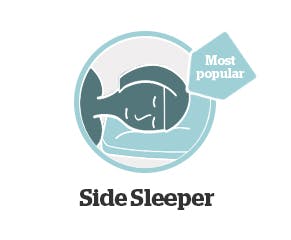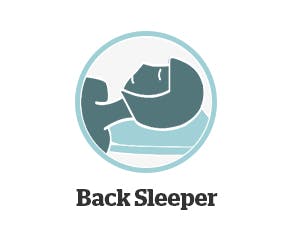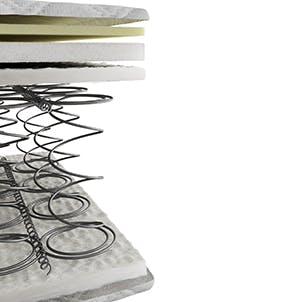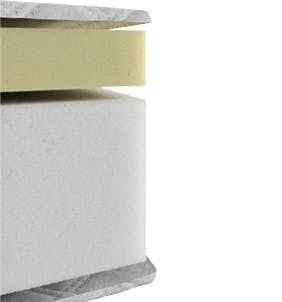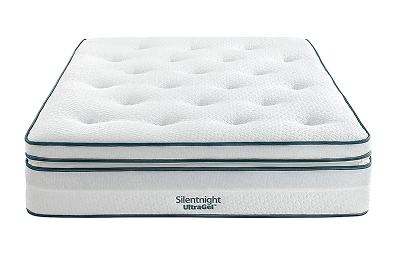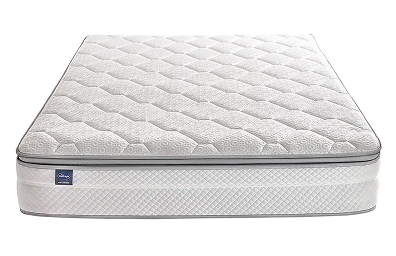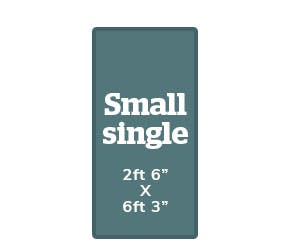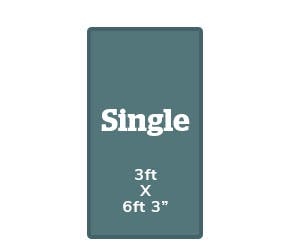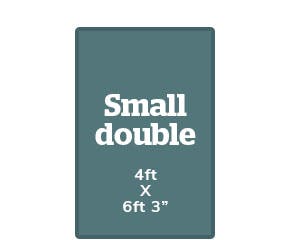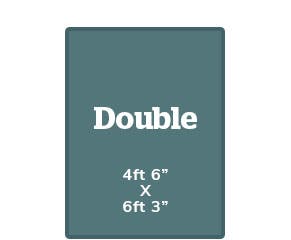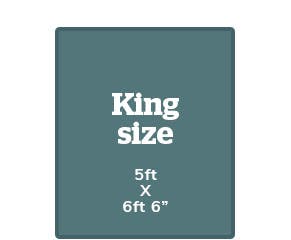Mattresses Buying Guide

Find the perfect mattress
The single most important way to get a good night’s sleep is by investing in the right mattress.
In this Guide
Our mattress buying guide will give you expert advice on the following:
- How often should I replace my mattress?
- What’s the best mattress for my sleeping position?
- What’s the best mattress for my weight?
- What are the different mattress types?
- Which additional mattress features are available?
- What are the different mattress sizes?
- What is my mattress' guarantee?
- How can I make the most of my new mattress?
How often should I replace my mattress?
There are several factors that determine how long a mattress lasts, including the manufacturer, mattress type, how much you use it and how heavy you are. That said, a good quality mattress should last between 8-10 years. After that, it’s recommended you buy a new one to avoid it becoming uncomfortable and offering uneven support, not good for your back and posture, and definitely not good for the quality of your sleep.
There are several warning signs that you should look out for if you suspect it’s time for a new mattress.
Your mattress becomes saggy and lumpy, or you can feel the coils through the fabric.
You wake up sore, stiff and unrefreshed because your body isn’t being sufficiently supported.
The mattress fabric looks worn.
You have a better night's sleep in a different bed.
You’re more aware of your partner’s tossing and turning, or you both roll into the middle.
You notice allergies flaring up after a night’s sleep or notice allergies for the first time.
What’s the best mattress for my sleeping position?
Are you a front, side or back sleeper? Not everyone sleeps in the same position and how you snooze should be an important consideration when choosing your new mattress.
What are the different mattress types?
Mattresses aren’t all made of the same materials. We stock open coil, pocket sprung and memory foam mattresses, so it’s important to know which one works best for you.
Open Coil mattress
Features coils of high tensile steel, wound into hundreds of springs.
Pros
- The connected springs offer the same support across the whole sleep surface.
- Available in different comfort grades, some firmer than others.
- Good for single sleepers.
Cons
SHOP NOW
- Some feel movement and ‘roll together’ if sharing.
- Can be less supportive than other styles
Pocket sprung mattress
Individual pocket springs are enclosed within their own fabric pockets which move independently.
Pros
- Supports different weights sharing the same mattress, making them perfect for couples.
- Stops ‘roll together’ and reduces how much couples feel each other move in the night.
Cons
SHOP NOW
- Their sturdy construction makes these harder to turn and lift.
Memory foam mattress
Offers support by moulding around a person or body shape.
Pros
- Sinking-in feeling
- Relieves pressure points, while keeping you supported.
- Good for allergy sufferers as fewer dust mites.
- Distributes weight evenly.
Cons
SHOP NOW
- Retains heat, making you warmer at night.
- Can be quite heavy and harder to move
Which additional mattress features are available?
Now you’ve chosen your mattress type, think about what ‘extras’ you want and how they’ll help you to sleep better.
Memory Foam
Pillow Top
Orthopedic
Gel Top
Cool Top
Wool Fibres
- Moulds to the body’s contours and supports the spine.
- Offers a sinking-in feeling and pressure point relief.
- Adds an extra layer of comfort.
- A more supportive spring type.
- Spreads body weight and prevents the build- up of pressure points.
- Regulates temperature.
- Cools to reduce body temperature when getting to sleep.
- Regulates temperature.
- Made from natural fibres.
Additional Features
In addition to the popular features mentioned above, there are several other innovations our mattresses have that make them even more comfortable and give you a better night’s sleep.
Anti-allergy
These mattresses have been specially created to reduce the presence of dust mites that lead to allergies. Many also have hypoallergenic layers which prevent other allergy triggers such as bacteria and mould so you get a healthier, fresher sleep.
Water resistance
It’s inevitable that little accidents happen with little ones at night. A water-resistant mattress or mattress protector is essential for cots and toddler beds that might be prone to water damage from nappies or bottle leaks.
Quilted top
As the name suggests, a quilted top mattress has a quilted layer on the top. Designed to add extra cushioning, it’s especially effective for side sleepers as it reduces the pressure on the hips and shoulders, giving you a more comfortable night’s sleep.
Tufted top
A tufted top mattress comprises of tufts which keep the mattress fillings together. This allows the springs to stay where they are meant to be and stops the mattress from sagging so that it lasts longer.
What is my mattress’ guarantee?
We stock only top, high-quality brands at Dunelm, and they all offer substantial guarantees when it comes to how long your mattress will last.
Top tip 1: How often to turn
You should rotate your mattress every 2-4 weeks for the first few months to ensure each side gets equal wear. After that you should rotate it every 3 months. If you’re able to flip your mattress to, then do this at the same time as rotating.
Top tip 2: Mattress protectors
Mattress protectors are a great way to keep your mattress clean and fresh. Make sure to measure the depth of your mattress before buying a mattress protector, so it fits perfectly.
How can I make the most of my new mattress?
While it's exciting getting a new mattress, before you dive in, here's what you need to do:
- A rolled mattress needs six hours to expand before it can be slept on and will take up to 72 hours to fully recover.
- A rolled mattress needs unpacking within three months of its arrival.
- It’s not uncommon for a foam mattress to have slightly unusual smell at first but this will disappear after a few days out of the packaging.
- All mattresses should be left to air for a few hours after unpacking.
- Allow time for fillings to settle as this will affect your comfort level over the first few weeks.
- Remember, your body can take up to 30 nights to adjust to a new mattress.
UltraGel™
A gel-infused comfort layer shapes to your body but bounces back too.
Responds to movement so you can toss and turn without disturbing your partner.Memory Cool™
Sink-in memory foam
keeps you cool.
Graphite-infused particles in the foam absorb body heat.Memory
Gently wraps around your body to keep you comfortable for years.
Takes pressure off your muscles and joints as you sleep.

